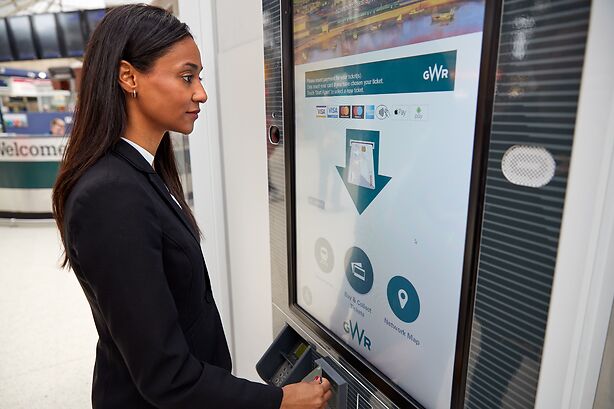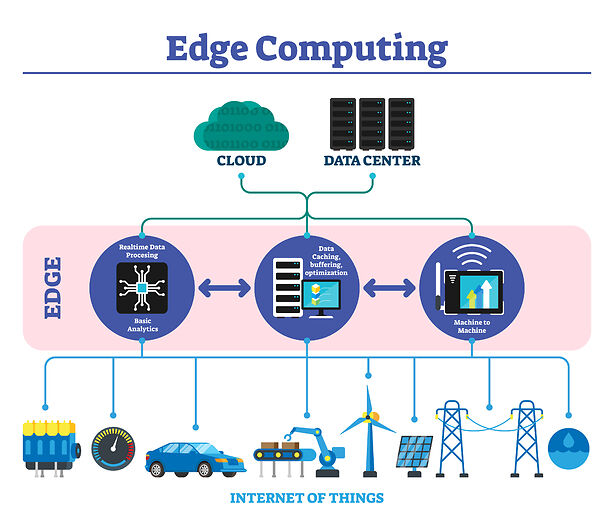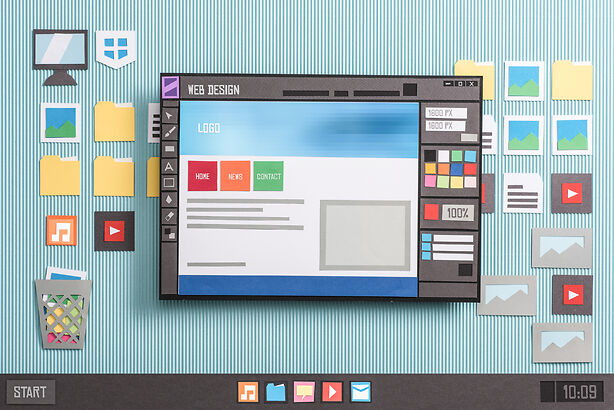
Top 7 latest trends driving next-generation customer service in 2022
Why is customer service a big deal? How important is it to your business? Well, the answer to that question would be, “The customer service you offer can be your ticket to writing your success story.” Fascinating enough? Yes, it is. And with the importance of customer service growing and glowing every day, the customer’s expectations remained the same. That is a friendly and knowledgeable interaction filled with good experience, with the goal being to provide a quick and efficient solution to the customer’s problem or question. With that being said, the customer is and will always be in control, and they have the power to decide the future of your business. If you don’t prioritise customer service for your business, some other competitor of yours will. And with customer service issues emerging every year, keeping up with these can be quite a challenge. But it is a crucial part because about 77% of the customers stay loyal to the company that is providing top-notch service to them.
Drilling down, a few years back, customer service meant calling or messaging customers through the mobile phone to offer services or was the best you could do to reach out to your customers, but not anymore. The future of customer service can be determined by the huge shifts taking place in customer service to add real value and solve customers’ problems that are currently dominating the market. What you need for enhanced customer service are some tools and technologies that are driven by innovations. These new implementations improve customer and agent experiences, along with business metrics like revenue, operational costs, and customer ratings. But you may often misunderstand the usage of technology and take it for granted, meaning, the implementation of any technology or trend leads to a sinking feeling that almost feels like nothing is going in your way. Maintaining the trends and execution of these needs to be done in a fairly consistent way to avoid consumer dissatisfaction and obtain more elation.
To help you plan your strategy more effectively, we put together a list of the latest trends that will impact the customer service industry and prepare you for pleasant customer service in the coming year. It’s time to move forward. Let’s go!
- Omnichannel support
- Chat support is being handled by chatbots now
- Mobile devices are growing day by day
- Video support is the magic trick
- Evolving self-service
- Social media service is ‘The Trend’
- Personalization is a must now
- Final words
Are you still stuck in the dilemma that customer service is about calling customers and taking feedback from them? Well, those days are long gone. Customers don’t expect you to call them and ask if they have any questions or concerns. Rather, they expect to connect with your brand or company through multiple mediums like phone, social media, company website, emails, SMS, etc. But why maintain so many channels when you can just have one point of contact with all of them? The need to streamline the customer’s information and messages across various channels rises because they expect you to be available 24/7. If not, some may lose patience and confidence in your company, which leads to customer dissatisfaction. The fact that companies that delivered strong omnichannel customer service retained 89% of their customers is no joke. And the point is that maintaining different mediums is not important, but maintaining perfect coordination between these becomes a highlight here.
Using omnichannel support helps you deliver a more cohesive, real-time service, integrated customer experience, free of restrictions solutions, and also enables you to get in-depth insights no matter how a customer reaches out to you. Leveraging the omnichannel customer service trend can ensure that you provide a greater interaction history from every channel under a single roof along with exceptional service to your customers because, if we are looking into the demographics of this tech world, there is no question that the communication channels play a major role in promoting businesses. Not just the customer but these services can also support your team in gaining a bigger coverage of customers with fewer efforts. So, tell us when you are going to go full omnichannel.
We all want answers to our questions in seconds or minutes and to do this, chatbots are the perfect option because no human can always be available, which is why you need to take advantage of the technology here. Chatbots have been the next big thing in customer service since the advancements we have seen in AI and ML, and their popularity is not ending soon because since they were discovered, they have been growing in every aspect. With that, more and more businesses opt to implement chatbots to automate routine questions quickly, and chatbots can direct customers to solve their issues or gather the needed information with the answers they provide. If you want to look into the numbers in chatbots, we can say 65% of millennials want chatbots involved in the customer service process. This way, they are at every stage in the service process since they are streamlining and optimising customer experiences.
With the help of these, chatbots have been becoming more powerful and more likely to understand the users from the insights they get from resources like self-help articles or FAQs to resolve customer questions, and with the help of these, they develop knowledge graphs to help customers better and understand them more. No matter how the question is asked, whether it is twisted or turned, chatbots can identify the answer with just one keyword. This understanding has led to benefits like increased customer happiness, aiding lead generation, getting answers round-the-clock, not waiting in lines or in queues, enhancing the agent experience by triaging customer requests, and not needing to repeat oneself when transferred to agents. This supports keeping a high level of customers satisfied with your service while simultaneously decreasing support tickets. But remember, no technology should go unchecked. No matter how mediocre the technology you are deploying is, it should always be checked with a human agent. If not, it may lead to alienation of your customers or worse, customer dissatisfaction.
What is the first thing you usually use to learn about something? Yes, you are right. Your mobile phone is the answer. Mobile devices have always been the beginning of customer service and they will be the biggest turnover too. Because the numbers state that mobile customer service offered accounted for 65 percent of all e-commerce traffic and 53 percent of sales, and this mobile adoption is called m-commerce. They have been acting like a bridge between your company and the physical world, which is your customers. By m-commerce, we mean two things. One is a mobile application and the other is a website that supports a mobile layout. Considering that there is a constant increase in the number of users that use mobile phones, using it to your advantage, launching m-commerce can help you have a larger scope. This new buzzword can help you create a great marketing channel for your business.
Using m-commerce to carry out business transactions can be a great way to attract new customers because not all of them will go on to their laptops to search for your services. Not just that, mobiles are not just solely for purchasing or booking your services rather they offer bigger insights on the in-store experience, price comparison, customer reviews, and looking up product information. To add a little bit more spice, you can add text and voice search, which will provide a better customer experience than you would be expecting. To transform your business, m-commerce will act as the main approach to deliver customer personalization and a promotional expansion that will develop customer loyalty and rapport with customers. So, when are you getting on the train to m-commerce?
What’s better than a video chat with your customers when they are confused about the products or services? Video chat has been seeing a drastic rise in recent times because it has become a bridge between online and offline experiences. The advanced technology and new marketing tactics of these videos can be used as perfect leverage to reach out to your customers. Imagine you are in a furniture showroom or a clothing store. Using video chat to let you explore your products by just sitting at home, which will make them feel like kings and queens, and that would be the turning point for you as it helps you earn some customer groups and loyalty. Video is a stable and effective platform to offer online experiences in ways that no other channel can, and it is not just us; 85% of the customers find video chat a wholesome experience because they don’t want to limit it to phone calls, chats, or emails anymore.
But there is a catch here. Not everyone can tackle technology in one go. To offer a seamless video service experience to your customers, you need to understand the technology and then modify and cater to it according to their needs. Since modern businesses are well aware of the fact that video services are impactful, you need to make sure that you are using this emerging trend to the fullest by using the best premium support you can because technology is fun yet critical. So, analysing this crucial tool and tackling it by using the right setup will provide your business with the best technology support, which will provide your customers with the perfect product details and accurate information. offering real-time assistance to your customers, which will benefit your business in many ways. This way, the video service is turning new tables, and this trend may well continue. So don’t wait for the right time, rather jump on the opportunity and make the move now!
Self-service has always been the customer’s steady preference. This is because there were always people who had enough confidence through crisis-related experience to give it a try to look up answers to their questions before they considered contacting the company through a knowledge base or help center. This can be done through automation. This technology can guide your customer support team in finding accurate solutions to customer problems, maximising efficiency and minimising response time. To maintain a good brand image, you need to make the quality of your customer care service a priority, which is why you need to provide the best automated tools to your customers that can guide them through the hurdles they have been facing. Because this can affect up to 73 percent of shoppers who are in favor of self-service technologies for example automated checkout, automated KYC, etc.
But remember, technology is always tricky and when it comes to automating customer services, you need to step up and have a dedicated knowledge base alongside focusing on factors like quality and searchability, because if not, it will look like you are just flooding in information that the customer will not even understand and with that thorough checking, you can escalate customer satisfaction. You can do that by not just providing a representative-to-customer interaction; rather, you can think outside of the box and include services such as an FAQ page, chatbots, or a comprehensive knowledge base. This will not only improve a significant CSAT but also free up time and burden from your customer service rep team, which helps them focus on complex hand-on tickets for better support. So, look into self-service options you can use for your customers and monitor the impact on customer loyalty and satisfaction.
Social media has always been the most powerful place for many brands. The power it holds can help your business grow in just a few minutes or hours because it evolves continuously. And social media has been on the board of customer service trends because it offers you a great platform to connect with your customers and it gives great coverage to a wide range of audiences. They don’t just offer a face to your brand but rather a place where you can connect with your customers and engage with them, and the best part is to answer their questions by providing customer service with care. Now, this is a crucial part because a survey conducted shows 63% of the customers wanted the brands to have a social media handle for better customer service. But why? Because of the convenience, social media offers are like a children’s game for users to connect and get answers to their questions.
In today’s time, people find brands favourable that are interactive and active on social media. Since it has the highest tendency to intensify your brand by using different genres of content to build up your brand, it acts as a great medium to engage with your customers and develop public relationships with the audience. You can impress your customers by answering their queries that are displayed to the support team on their dashboard in the form of complaints and support requests. The support team can then contact the customer or client over the same platform or through other platforms to resolve their queries, and this can help you gain positive feedback among the customers, which will improve your customer base. As this will increase the number of customers reaching out to you, it also delivers the extra love and care that you are putting into making them comfortable on the platform that they are comfortable with, which will gain customer trust and loyalty. So, step on the pedal now and accelerate your social media support.
What makes you feel most welcome when you enter a clothing store, for example? Well, the personalization they offer while picking up every single piece of clothing from the wardrobe and displaying it only for you. Similarly, in customer service, your customers will love personalization. It isn’t any new concept but is always a buzzword. When you cater services according to the customer’s choices at every touchpoint, this can help you deepen your connection with your customers, making sure that you have loyalty in every step you take. But remember, there is a chance to lose 71% of customers if you are providing a service that is not even close to their preferences. However, the good news is that dark clouds always clear away and the sun shines brightly again. This is why you should find better ways to know your customers, study them, and collect data about them that can help you in the future to ensure you can have tailor-made services for them.
These days, people want more personalised online experiences, and surprisingly, they are even willing to pay more for them. Personalizing services for customers means you are taking it a step further in your marketing strategy too. This includes unifying customer data by understanding the customer’s requirements, studying customer behavior, having contact history, capturing customer data transparently, and studying their likes and dislikes. These tiny steps can help you engage with consumers with a personal touch and add value to their experience. However, it is also important that you know how to walk the walk while talking to your customers and treating them well by eliminating data silos and centralising support processes. You can also get feedback from customers to know how they feel about your services and where you can improve. This offers maximum customer retention because this will show the care and support you are willing to offer to your customers.
Final words
Well, now that you have seen the aforementioned customer service trends, you understand what a customer-centric vision your company needs. The evolving customer trends can be hard to keep track of, but if implemented correctly, your company can meet all the customer expectations. It will transform your traditional customer service strategies into golden rules that will increase customer retention and loyalty to your brand. With all the foreseen trends, one thing is pretty clear, and that is digital technologies play a major role in providing a greater customer experience. Since customers no longer want to just find companies that are reactive, but rather, they are looking for organisations that are proactive and reach out to them to make personalised services. They need to be full of surprises and leap by changing their strategies every now and then. So, are you still waiting for customers to come to you or are you going to follow these trends and prove your worth to them?





























